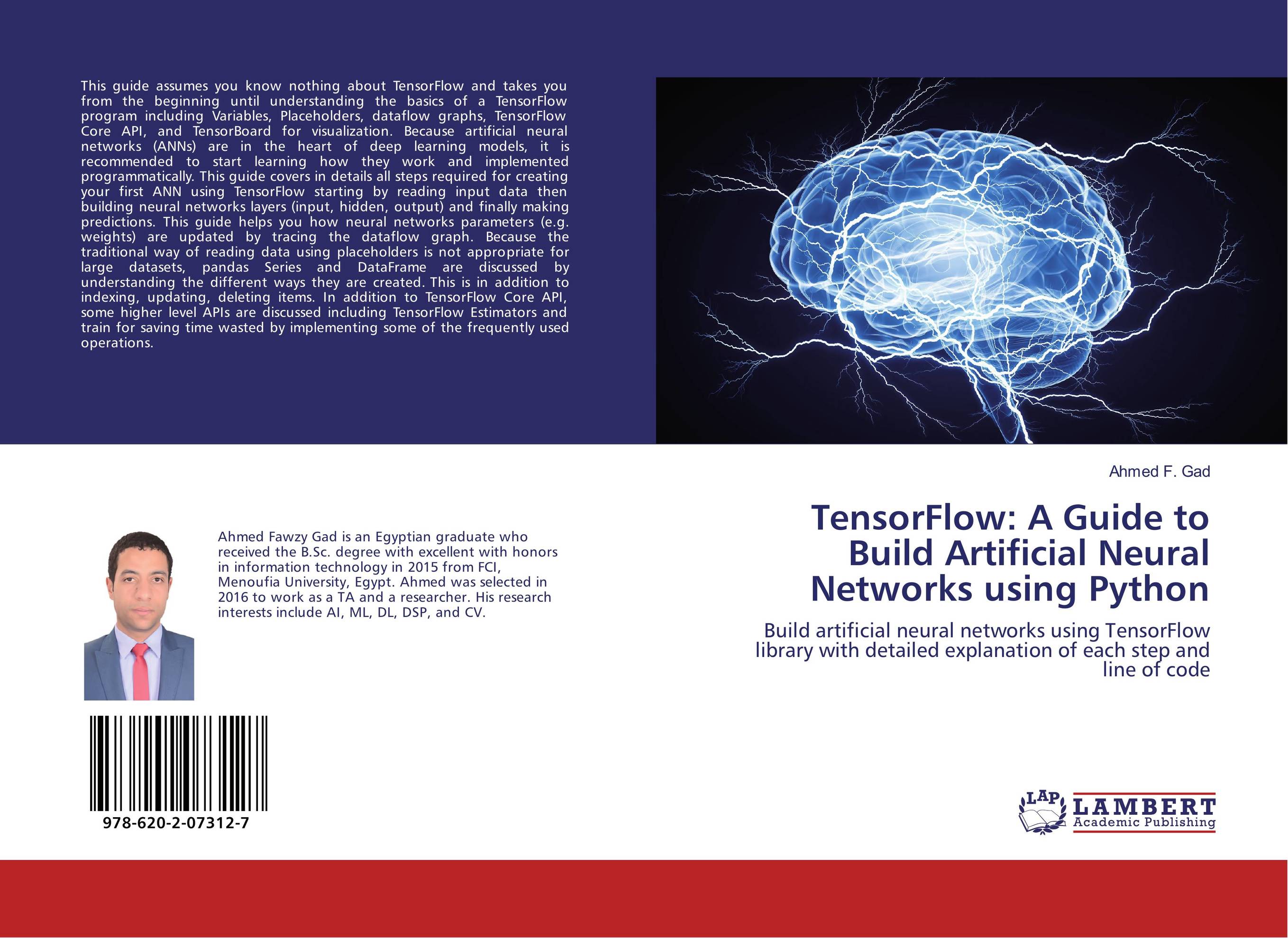| Поиск по каталогу |
|
(строгое соответствие)
|
- Профессиональная
- Научно-популярная
- Художественная
- Публицистика
- Детская
- Искусство
- Хобби, семья, дом
- Спорт
- Путеводители
- Блокноты, тетради, открытки
TensorFlow: A Guide to Build Artificial Neural Networks using Python. Build artificial neural networks using TensorFlow library with detailed explanation of each step and line of code

В наличии
| Местонахождение: Алматы | Состояние экземпляра: новый |

Бумажная
версия
версия
Автор: Ahmed F. Gad
ISBN: 9786202073127
Год издания: 2017
Формат книги: 60×90/16 (145×215 мм)
Количество страниц: 96
Издательство: LAP LAMBERT Academic Publishing
Цена: 29327 тг
Положить в корзину
Позиции в рубрикаторе
Отрасли знаний:Код товара: 181554
| Способы доставки в город Алматы * комплектация (срок до отгрузки) не более 2 рабочих дней |
| Самовывоз из города Алматы (пункты самовывоза партнёра CDEK) |
| Курьерская доставка CDEK из города Москва |
| Доставка Почтой России из города Москва |
Аннотация: This guide assumes you know nothing about TensorFlow and takes you from the beginning until understanding the basics of a TensorFlow program including Variables, Placeholders, dataflow graphs, TensorFlow Core API, and TensorBoard for visualization. Because artificial neural networks (ANNs) are in the heart of deep learning models, it is recommended to start learning how they work and implemented programmatically. This guide covers in details all steps required for creating your first ANN using TensorFlow starting by reading input data then building neural networks layers (input, hidden, output) and finally making predictions. This guide helps you how neural networks parameters (e.g. weights) are updated by tracing the dataflow graph. Because the traditional way of reading data using placeholders is not appropriate for large datasets, pandas Series and DataFrame are discussed by understanding the different ways they are created. This is in addition to indexing, updating, deleting items. In addition to TensorFlow Core API, some higher level APIs are discussed including TensorFlow Estimators and train for saving time wasted by implementing some of the frequently used operations.
Ключевые слова: tensorflow, Artificial Intelligence, COMPUTER SCIENCE, Deep Learning, FFNN, Machine Learning, MLP, Neural Network, Programming, python, pandas



